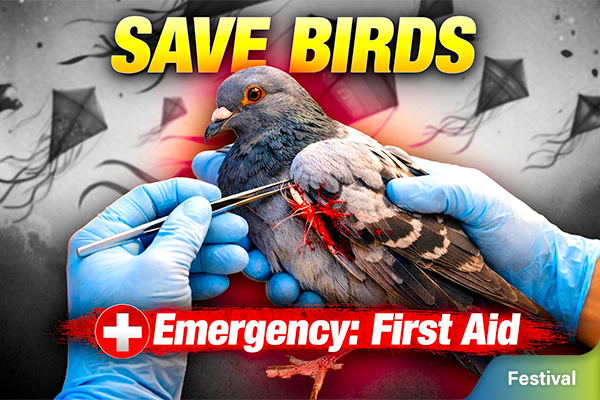Was Lal Bahadur Shastri Poisoned?
The Death of Lal Bahadur Shastri’s death is one of the most controversial deaths in Indian history. In today’s video, we’ll learn about his death.
Lal Bahadur Srivastava was born on 2nd October, 1904 in Uttar Pradesh. Shastri swam the Ganges twice a day to attend school and tied books on the top of his head because he didn't have enough money at that time to take a boat. He completed his graduation from the Kashi Vidyapeeth in 1926. He was given the title “Shastri” meaning “Scholar” by Vidya Peeth as a part of his bachelor’s degree award. But this title got into his name. He got married to Lalita Devi in 1928. Shastri was very much influenced by Mahatma Gandhi and Lokmanya Tilak. He was also a leader of the Indian National Congress Party. During the 1920s, Shastri ji joined the Indian Independence Movement. He was sent to jail but was released, as he was still a minor. In 1930, he also participated in the Salt Satyagraha, for which he was imprisoned for more than two years. He was again sent to jail in 1942 after Mahatma Gandhi issued the Quit India speech in Mumbai. He was imprisoned until 1946. Shastriji had spent some nine years in jail in total. He utilized his stay in prison by reading books and familiarizing himself with the works of western philosophers, revolutionaries, and social reformers.
After India’s Independence, Lal Bahadur Shastri held different ministries at different times. As a Transport Minister, he had appointed women conductors for the first time. Being the Minister in charge of the Police Department, he passed the order that police should use jets of water and not lathis to disperse the agitated crowds. As Railway Minister, he installed the first machine at Integral Coach Factory in Chennai in 1955. On 9 June, 1964, Lal Bahadur Shastri became the Prime Minister of India. He was the second Prime Minister of India. He promoted the White Revolution, a national campaign to increase milk production, and the Green Revolution, to increase food production in India. During his tenure as Prime Minister, India faced another aggression (war) from Pakistan in 1965. He permitted the army to retaliate and said "Force will be met with Force" and gained popularity. At this time he introduced the slogan "Jai Jawan Jai Kisan" which played a pivotal role in shaping India's future. The Indo-Pak war ended on 23 September, 1965. The Russian Prime. Minister Kosygin, offered to mediate and on 10 January, 1966, Lal Bahadur Shastri and his Pakistan counterpart Ayub Khan signed the Tashkent Declaration to end the war. However, in a surprising moment, Shastriji died on 11th January 1966 at 1.25am in Tashkent , Uzbekistan(earlier it was a part of Soviet Union) allegedly of a heart attack. However, there are several conspiracy theories about what caused Shastri’s death. Let me tell you about some of them: After signing the Tashkent agreement at around 4pm on 10th January, Shastri reached the villa he was provided by his Russian hosts. Late in the evening, he had a light meal prepared by Jan Mohammad, the personal cook of TN Kaul, the Indian ambassador to Moscow. At 11.30pm, Shastri had a glass of milk brought by the ambassador's cook. When his personal staff took leave of him at that time, he was fine. But around 1.25am on 11th January, Shastri woke up, coughing severely.
-
Some reports say there was no phone in the room, while some say there were 3 phones but still he walked out to another room to tell his staff. Did he want to give a special message to his staff?
-
The only sure-shot way to find out whether or not Shastriji was poisoned was to carry out a post-mortem on his body. The Russian intelligence offered to conduct a post mortem and also the family demanded it. But the demand was not accepted by the Indian authorities. Interim prime minister Gulzarilal Nanda was to later on acted ignorant about Shastri’s family approaching him with the demand.
-
When Shastri’s body was brought to Delhi, there were black and blue marks as if there was ink under his skin. Seeing the strange blue patches on Shastri’s body, his mother screamed that someone had poisoned her son. When questioned by his wife, the face was covered with sandalwood to cover the marks. Also there were cut marks on Shastri's stomach and back of the neck. The cut on his neck was pouring blood and the sheets, pillows and clothes used by him were all soaked in blood. His cap too was soaked in blood and has been preserved by the family.
-
Shastriji carried his personal cook everywhere, but no one asked what happened to the cook in Tashkent. Noone ever questioned the other cook who had cooked Shahstri’s last meal. However the Russians did arrest him. Jan Mohammed was employed in the Rashtrapati Bhavan after the Tashkent tragedy.
-
The doctor who had checked Shastri mysteriously died along with his family a few months later.
-
No one had any clue about what the KGB was suspecting. At 4am, Ahmed Sattarov, the Russian butler attached to Shastri, was rudely woken up by an officer of KGB who told him that they suspected the Indian prime minister had been poisoned'. Sattarov was handcuffed and, along with three junior butlers, was rounded off to a location 30km away. Their harsh interrogation commenced in a dungeon.
-
During the 1965 war, the Indian army had crossed POK and had reached Lahore, Pakistan. It is being assumed that Shastriji signed the tashkent accord under pressure as he did not agree to some of the points mentioned like how will pakistan stop its involvement in Kashmir. He would not have signed any agreement which will not benefit India.
-
In 2009, A writer Anuj Dhar asked the government for official records of Shahtri’s death under RTI but the government refused, saying it was confidential.
Why is the Indian government not declassifying the files on Shastriji? Why is it hiding the truth? There are no answers to it.
Whatever the controversy may be, Shastriji was a highly disciplined person with high self-esteem and morals who did not even own a car after becoming a Prime Minister. A salute to one of the greatest Prime Ministers of India on his birth anniversary.







